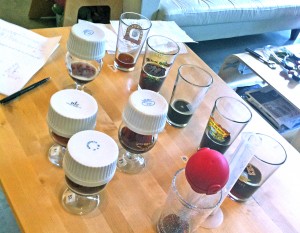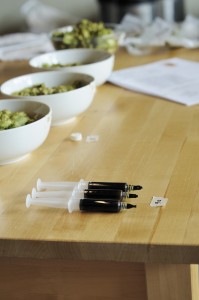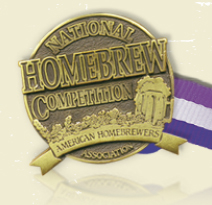Big stouts and vanilla is a natural pair. Add a touch of creamy sweetness, and you’ve got a winner. This recipe has a luscious mouth feel from the flaked barley and crystal malts, smooth roast flavors of coffee and chocolate, subtle dark fruit notes, and a slight sweetness from the lactose. This is a slightly sweet beer, but not nearly as sweet as many commercial sweet stouts.
Specifications
Volume: 5.57 Gallons
Original Gravity: 1.077
Terminal Gravity: 1.028
Color: 34.63 SRM
Alcohol: 6.52%
Bitterness: 39.2
Efficiency: 64% (tweak recipe to match efficiency of your brew house)
Boil Length: 60 Minutes
Ingredients
12 lb (63.6%) Maris Otter; Crisp
3 lb (15.9%) Barley Flaked
6 oz (2.0%) Crystal 60; Crisp
8 oz (2.6%) Crystal 120; Crisp
8 oz (2.6%) Special B – Caramel malt; Dingemans
12 oz (4.0%) Chocolate Malt; Crisp
12 oz (4.0%) Pale Chocolate Malt; Crisp
8 oz (2.6%) Roasted Barley; Crisp
.75 oz (42.9%) Magnum (12.5%) – added during boil, boiled 60 m
1 ea Whirlfloc Tablets (Irish moss) – added during boil, boiled 15 m
8 oz (2.6%) Lactose
.75 tsp Wyeast Nutrient – added during boil, boiled 10 m
1 oz (57.1%) Cascade Leaf (5.7%) – added during boil, boiled 10 m
1 ea WYeast 1968 London ESB Ale – 2400ml 1.040 starter on stir plate
3 ea Madagascar Vanilla Beans – split and soaked in 6oz high quality bourbon – added dry to secondary fermenter
Water
Carbon-filtered Seattle water which is very soft. All salts added to grist before mashing in.
2 g Epsom Salts (Magnesium Sulfate)
2.0 g Gypsum (Calcium Sulfate)
4.0 g Calcium Chloride (Calcium Chloride)
4.0 g Baking Soda ()
Mash
60 Minute Saccharification Rest at 152° F
10 Minute Mashout Rest at 170° F (I do a second hot water infusion to mashout)
Sparge at 170° F and collect sufficient runnings to hit pre-boil volumes.
Fermentation
- Chill wort to 64° F and pitch yeast slurry.
- Set temp controller to 66° F and allow to rise to this temp.
- Ferment at 66-68° F until beer is 2-6 points from terminal gravity then raise temp to 72° F. Hold at 72° F for 2 days.
- Chill fermenter to 34° F. Rack beer off yeast into clean container with bourbon soaked vanilla beans (include the bourbon as well).
- Age 1 month on vanilla beans before packaging.
Keys to Brewing
- Controlling fermentation temperatures and pitching a clean healthy yeast slurry is important in preventing hot alcohols in this beer that would distract from its rich, smooth qualities.
- Use fresh high-quality vanilla beans. If they look dried out, they are probably old and shouldn’t be used. Beans should be sticky, almost tacky to the touch. I’d recommend sourcing these online from specific vanilla retailers who move a lot of beans (as opposed to the ones that may languish for months in the homebrew shop).
Awards
The beer brewed from this recipe has won several awards as a BJCP Category 21a Spice / Herb / Vegetable Beer:
- 2012 NHC First Round – 1st Place
- 2012 Novembeerfest – 2nd Place



